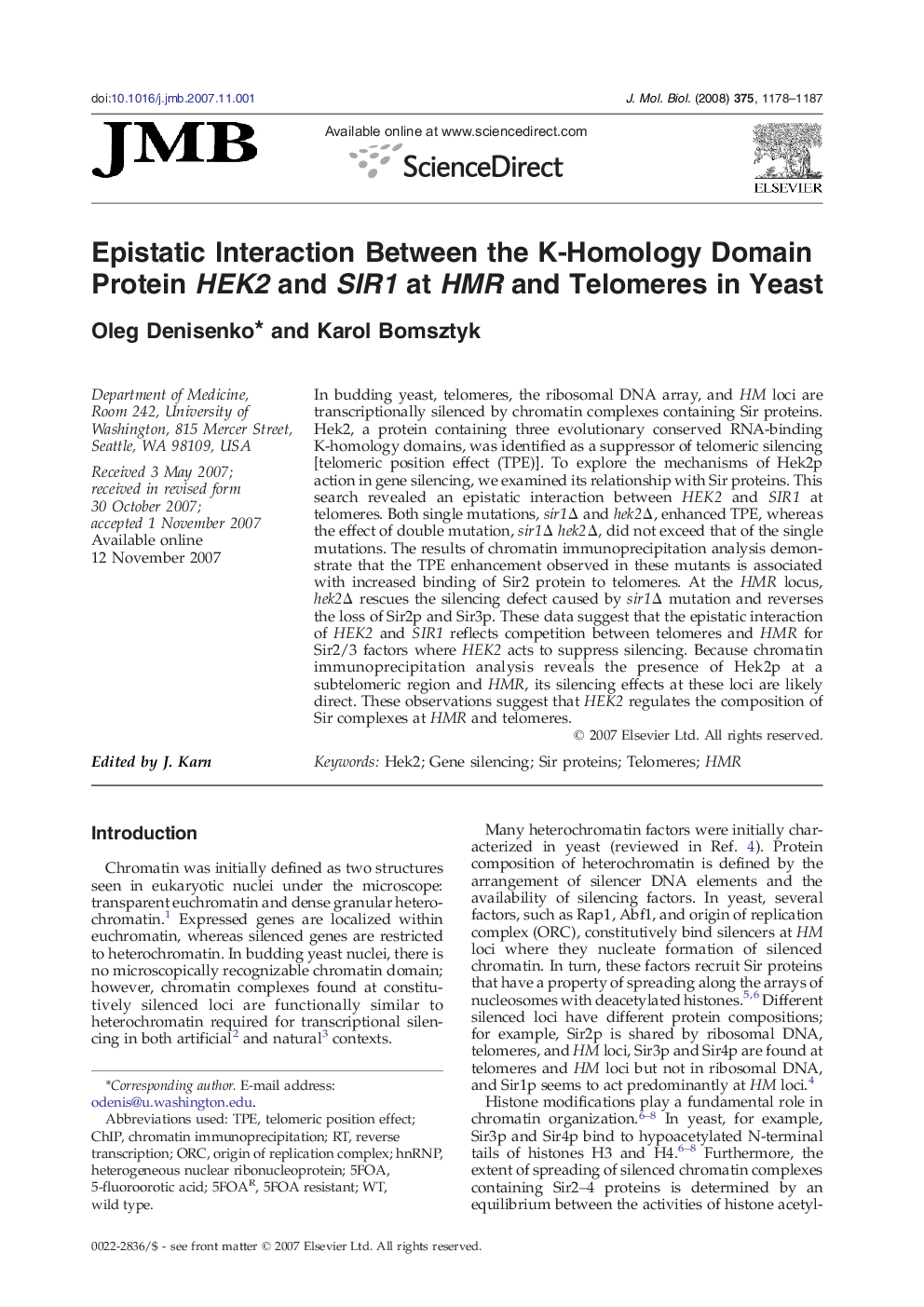| Article ID | Journal | Published Year | Pages | File Type |
|---|---|---|---|---|
| 2187612 | Journal of Molecular Biology | 2008 | 10 Pages |
In budding yeast, telomeres, the ribosomal DNA array, and HM loci are transcriptionally silenced by chromatin complexes containing Sir proteins. Hek2, a protein containing three evolutionary conserved RNA-binding K-homology domains, was identified as a suppressor of telomeric silencing [telomeric position effect (TPE)]. To explore the mechanisms of Hek2p action in gene silencing, we examined its relationship with Sir proteins. This search revealed an epistatic interaction between HEK2 and SIR1 at telomeres. Both single mutations, sir1Δ and hek2Δ, enhanced TPE, whereas the effect of double mutation, sir1Δ hek2Δ, did not exceed that of the single mutations. The results of chromatin immunoprecipitation analysis demonstrate that the TPE enhancement observed in these mutants is associated with increased binding of Sir2 protein to telomeres. At the HMR locus, hek2Δ rescues the silencing defect caused by sir1Δ mutation and reverses the loss of Sir2p and Sir3p. These data suggest that the epistatic interaction of HEK2 and SIR1 reflects competition between telomeres and HMR for Sir2/3 factors where HEK2 acts to suppress silencing. Because chromatin immunoprecipitation analysis reveals the presence of Hek2p at a subtelomeric region and HMR, its silencing effects at these loci are likely direct. These observations suggest that HEK2 regulates the composition of Sir complexes at HMR and telomeres.
